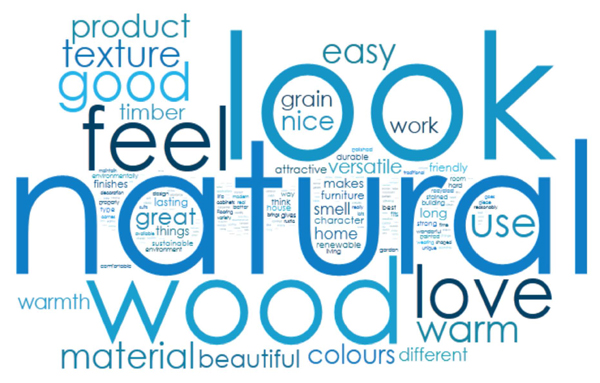Paarhammer is having an extended closure over the Easter period.
We will close on Thursday the 17th of April and will re-open on Monday the 28th of April.
Click here to view our latest blog
Wood: Australia's most loved material

Wood continues to grow as the most loved material among Australians.
In a recent survey WoodSolutions found that most Australians are likely to choose wood over other materials for various uses. Wood remains the most loved
material and is unmatched on attributes relating to aesthetics and sustainability. Wood is seen as far more natural, warm, timeless, uplifting and versatile
than other materials.
Almost half of consumers love wood (47%), compared to 25% for the closest competitor (modified wood), 9% love steel, 7% aluminium and only 2% plastic.
Advantages of using timber
Wood has unique characteristics and offers several environmental advantages:
- Wood is a renewable resource
- Wood products store carbon dioxide
- Comparatively, the manufacture of most wood products requires smaller amounts of energy; and
- Residues generated through the processing of wood can be reused in a variety of positive ways.
Choosing timber can help tackle climate change as wood stores carbon for life. Growing trees absorb carbon dioxide from the atmosphere, emit oxygen and
store carbon. Carbon remains locked in the wood for the life of the piece of timber even when it is made into a product like window or door frames.
Wood is also a natural insulator due to air pockets within its cellular structure, which means that it is 15 times better than masonry, 400 times better
than steel, and 1,770 times better than aluminium.
Life Cycle Analysis
LCA is a method of measuring the environmental impacts of building products over their whole life. The life cycle analysis of timber
follows the piece of wood from harvesting, manufacture, construction and product life to recycling and disposal. The manufacture of wood products typically
requires far less energy than other materials.
Embodied energy describes the energy consumed in providing materials for building construction. It includes the extraction and processing of raw materials,
along with manufacturing, transport and product delivery processes. Generally, the more highly processed a material is the higher its embodied energy.
The embodied energy of a building can be lowered by using locally available, natural materials like timber which is both durable and recyclable.
By ensuring sustainable forest practices and regenerating this natural product there are real possibilities to significantly improve the environmental
credentials of the building and construction industry by choosing wood.
Timber Certifications
In Australia there are three timber certifications recognised:
FSC® (Forest Stewardship Council), Australian Forest Certification Scheme (AFCS), and PEFC (Program for Endorsement of Forest Certification). Paarhammer
only uses timber with one of these certifications and is itself FSC®-Chain-of-Custody certified.
The versatility of timber is no better demonstrated than in the variety of second life products it makes its way into. Paarhammer uses all the factory
waste, shavings and sawdust to make wood briquettes which are then used to heat the factory and the remainder is sold to the local community. This initiative
saves almost an Olympic swimming pool size of landfill every year.
Australians are increasingly concerned about the environment and are making a greater effort to buy ‘green’ products. Support for timber harvesting is
at an all-time high.
‘A lot of people somehow imagine trees grow from the ground. They don't, they grow from the air. They are congealed carbon dioxide and all of that carbon is stored in them'
Professor Tim Flannery - 22 September 2008, Australian of the Year, Chairman of the Copenhagen Climate Council, Commissioner of the Climate Commission
More information:
Make it WoodWood Solutions